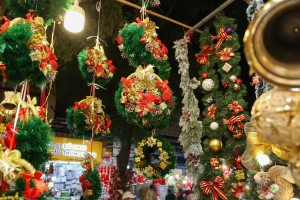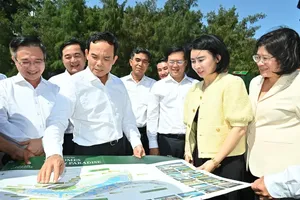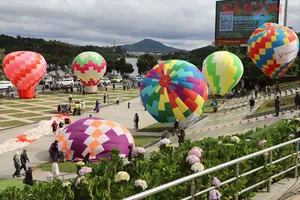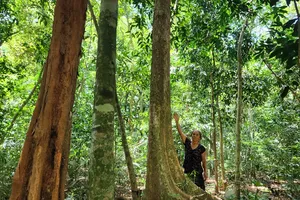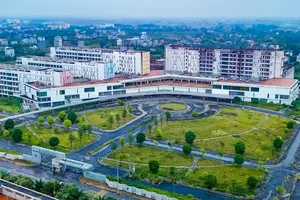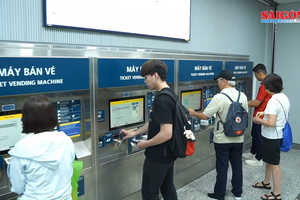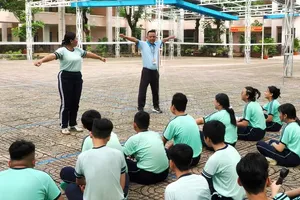In addition, the traditional form of performance of the Chinese community in Ho Chi Minh City has been recognized as a City-level Historical and Cultural Heritage.
Attending the ceremony were Head of the Propaganda and Mass Mobilization Commission Nguyen Manh Cuong; Secretary of the Party Committee of Thu Duc City Nguyen Huu Hiep; Vice Chairwoman of the People’s Committee of the city Tran Thi Dieu Thuy; and leaders of the departments and organizations.
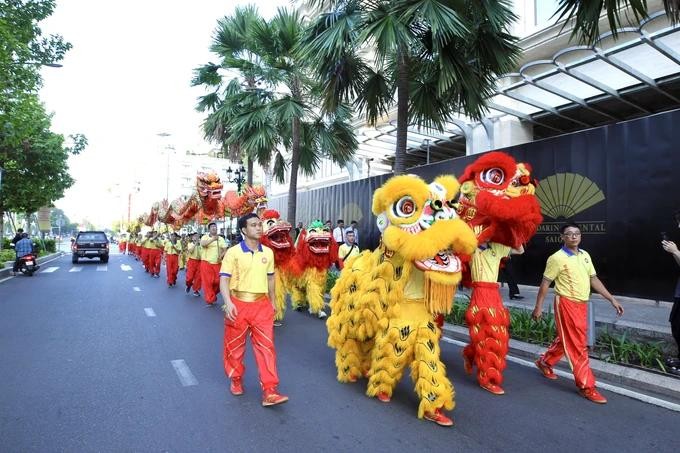
The art of the Kylin-Lion-Dragon dance is a traditional form of performance by the Chinese community in Ho Chi Minh City, representing a symbol of luck, prosperity, security, and good health during festive events, especially during the Lunar New Year, Mid-Autumn Festival, grand openings, and groundbreaking ceremonies. It reflects spiritual and educational values and the transmission of traditional culture, along with many other significant values.
Currently, Ho Chi Minh City has two UNESCO-recognized intangible cultural heritages, including Ca Tru (ceremonial singing) and Don Ca Tai Tu Nam Bo (southern amateur music).
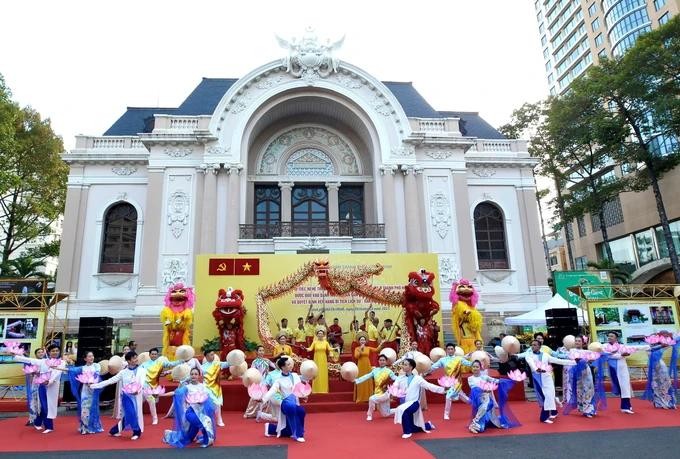
In addition, the city is home to five intangible cultural heritage items listed as National Intangible Cultural Heritage, including the Nghinh Ong (Whale Worshiping) Festival in Can Gio District; Tet Nguyen Tieu (Nguyen Tieu Festival) of the Chinese Community in District 5; the “Khai Ha – Cau An” Festival annually held at the Lang Ong Ba Chieu, the ancient tomb of Le Van Duyet, a high-ranking Mandarin of the Nguyen Dynasty in Binh Thanh District; Vovinam Viet Vo Dao; and the art of Kylin-Lion-Dragon dance, a traditional form of performance of the Chinese community in Ho Chi Minh City.
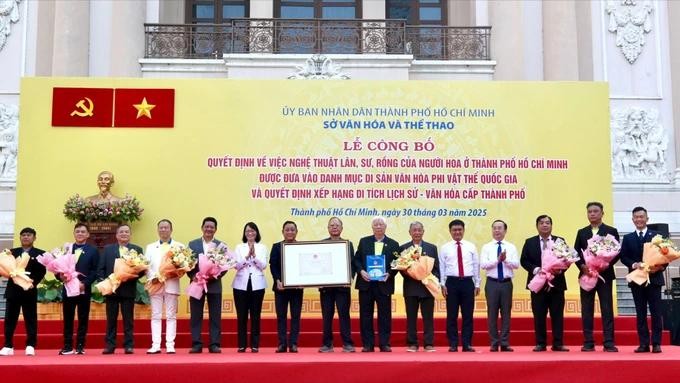
At the event, the city also announced the decision to recognize seven places as historical and cultural sites, including An Khanh Temple in Thu Thiem Ward, Long Binh Temple in Long Binh Ward, and Long Hoa Temple in Long Thanh My Ward in Thu Duc City; Tan Dinh Market in District 1; the architectural work of the Saigon University in District 5’s Ward 2; Mariamman Hindu Temple in District 1’s Ben Thanh Ward; and the architectural work of Trung Vuong High School in District 1’s Ben Nghe Ward.
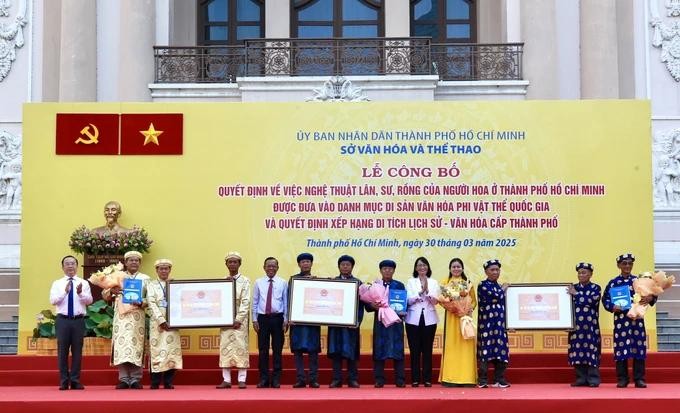
These heritages showcase the distinctive architectural style of Southern village communal houses, associated with the national liberation struggle and the reunification of the country, and demonstrate the cultural exchange between Vietnam and India and Western and Asian architecture. The historical and cultural values of these works reflect the development in the past, and they continue to retain their significance today.
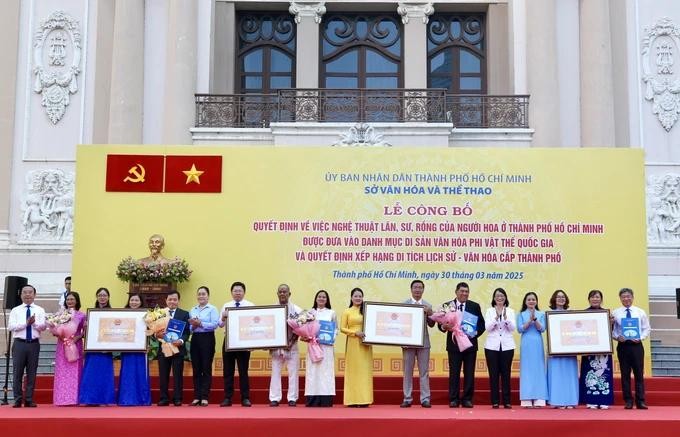
As of now, Ho Chi Minh City has 200 historical and cultural heritage sites, including two special national heritage sites; 58 national heritage sites, including two archaeological sites and 32 architectural works; and 140 city-level heritage sites, including 86 architectural works and 54 historical sites. Among these, 79 historical sites are linked to the national liberation struggle and the reunification of the country.
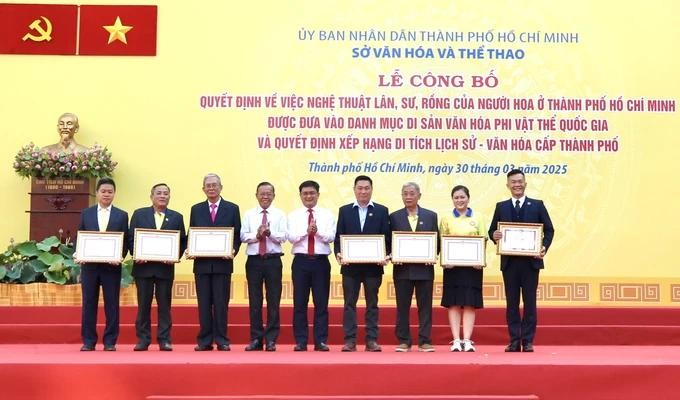
On this occasion, the People's Committee of Ho Chi Minh City awarded certificates of merit to seven organizations and two individuals for their positive contributions to the preservation and promotion of the national intangible cultural heritage of the art of Kylin-Lion-Dragon dance in Ho Chi Minh City.
Additionally, Portcoast Consultant Corporation (Portcoast), a consulting firm specializing in port design, marine engineering, and digital transformation, handed over a digital product digitalizing the 120-year-old Saigon Opera House worth VND11 billion (US$430,442), aiming to optimize the preservation and promotion of the cultural heritage value.
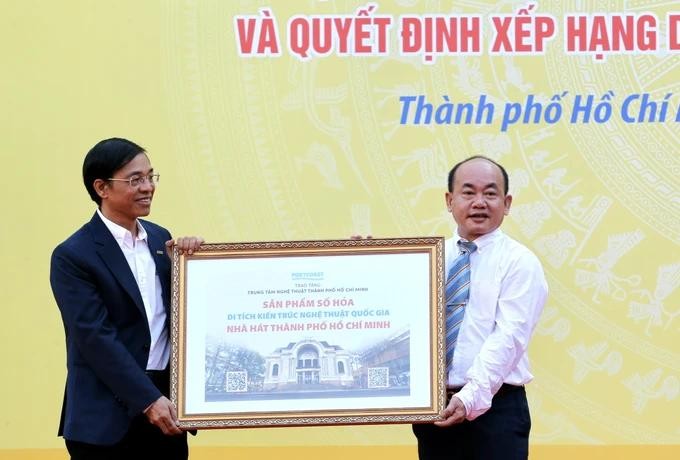
After the announcement ceremony, the Ho Chi Minh City Federation of Lion, Kylin, and Dragon Dance, along with the relevant districts, will develop a plan to preserve and promote this intangible cultural heritage associated with tourism, contributing to the economic, cultural, and social development of Ho Chi Minh City.
